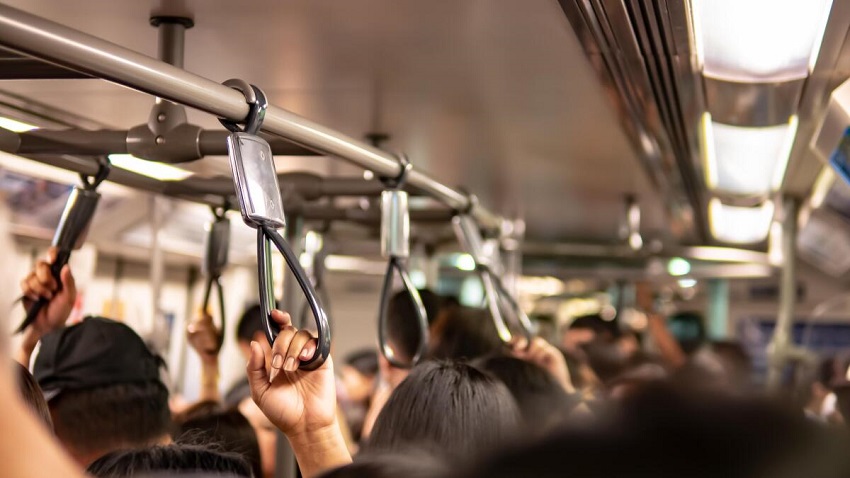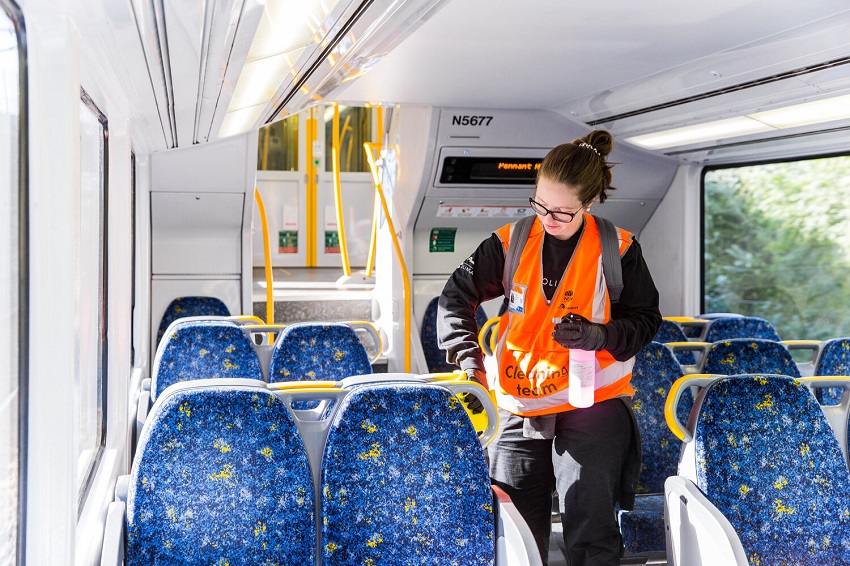Are you tired of crowded buses, delayed trains, and uncomfortable journeys? Public transport is a convenient option for many people, but it also has its drawbacks. In this article, we will explore some of the common grievances people have with public transport and why they dislike certain aspects of it. So, let’s dive in and examine what makes public transport less desirable for some individuals.
The Pros and Cons of Public Transport
Public transport offers several benefits, such as affordability, reducing traffic congestion, and being environmentally friendly. However, it also comes with its fair share of drawbacks that can make the experience less enjoyable for passengers.
Pros of Public Transport:
- Cost-effective: Public transport is generally more affordable compared to owning and maintaining a private vehicle.
- Environmentally friendly: Public transport reduces individual carbon emissions by decreasing the number of cars on the road, leading to improved air quality and reduced pollution.
- Traffic reduction: Public transport helps alleviate traffic congestion by reducing the number of private vehicles on the road.
- Accessibility: Public transport provides mobility options for individuals who don’t own a vehicle, including the elderly, disabled, and those who cannot drive.
- Social integration: Public transport facilitates social interactions and fosters a sense of community by bringing people from different backgrounds together.
- Stress-free travel: Passengers can relax, read, or work during their commute, avoiding the stress of driving and parking.
Cons of Public Transport:
- Limited flexibility: Public transport schedules are fixed, which may not always align with individual travel needs, making it less flexible compared to private vehicles.
- Crowding: During peak hours, public transport can get crowded, leading to discomfort and a lack of personal space.
- Potential delays: Public transport services can experience delays due to various factors such as traffic congestion, maintenance issues, or unforeseen circumstances.
- Route limitations: Public transport networks may not cover all areas equally, making it challenging for individuals in certain locations to access convenient services.
- Safety concerns: Instances of crime or harassment can occur in public transport systems, although security measures are often in place to mitigate such risks.
- Lack of privacy: Public transport involves sharing space with strangers, which may limit personal privacy and confidentiality.
It’s important to note that the pros and cons can vary depending on the specific city or region, as public transport systems differ in quality, efficiency, and coverage.
Overcrowding: A Battle for Space
One of the most common complaints about public transport is overcrowding. During peak hours, buses and trains can become packed with commuters, leaving little room to move or even breathe comfortably. This lack of personal space can be stressful and unpleasant, leading to a negative perception of public transport.
Delays and Unreliability: Time Wasted
Another frustration that passengers often face is the issue of delays and unreliability. Public transport systems may experience technical problems, unexpected traffic congestion, or other disruptions that result in delays. This can be especially problematic for individuals who rely on public transport for their daily commute or time-sensitive appointments.
Lack of Comfort: A Bumpy Ride
Comfort is essential when traveling, but public transport vehicles are not always known for providing a smooth and comfortable ride. Buses and trains may have limited seating space, uncomfortable seating arrangements, or outdated interiors. This lack of comfort can make the journey tiresome and less enjoyable for passengers.
Limited Flexibility: Fixed Schedules
Public transport operates on fixed schedules, which can be inconvenient for individuals who require flexibility in their travel plans. If you miss a bus or train, you may have to wait for the next scheduled service, leading to potential delays and disruptions to your itinerary.
Safety Concerns: Personal Security
Safety is a significant concern for many public transport users. Incidents of theft, harassment, or assault can occur in crowded spaces or poorly lit areas, making passengers feel vulnerable and unsafe. While efforts are made to enhance security, these concerns can deter people from using public transport, especially during late hours.
Hygiene and Cleanliness: Unpleasant Experiences
Maintaining cleanliness in public transport vehicles and stations is a constant challenge. Dirty seats, unpleasant odors, and lack of proper sanitation facilities can create an unhygienic environment that puts off passengers. These experiences can leave a lasting negative impression on commuters.
Lack of Privacy: Constant Surveillance
Privacy is often compromised in public transport settings due to constant surveillance. CCTV cameras and monitoring systems are installed to enhance security, but they can make passengers feel like their every move is being watched. This lack of privacy can be discomforting for individuals who value personal space.
Inadequate Accessibility: Challenges for the Disabled
Public transport systems should be accessible to everyone, including individuals with disabilities. However, many systems still face challenges in providing proper accessibility features such as ramps, elevators, and designated seating. This lack of accommodation can make it difficult for people with disabilities to utilize public transport effectively.
Noise and Disturbances: Unwanted Disruptions
Public transport can be noisy and disruptive, especially during peak hours. Loud conversations, noisy phone conversations, and blaring music can create an unpleasant atmosphere for passengers who seek a quiet and peaceful journey.
High Costs: Budget Constraints
While public transport is generally considered affordable, costs can still be a burden for certain individuals. Regular commuters may have to spend a significant portion of their income on transportation expenses, especially in cities with high living costs. The financial strain of using public transport can contribute to the dissatisfaction with the system.
Environmental Impact: Pollution and Carbon Footprint
Public transport is often seen as a greener alternative to private vehicles, but it still has an environmental impact. Older buses and trains emit pollutants, contributing to air pollution and increasing carbon emissions. This aspect can discourage environmentally conscious individuals from fully embracing public transport as their preferred mode of transportation.
Public Transport Etiquette: Dealing with Inconsiderate Behavior
Public transport etiquette is crucial for a pleasant journey, but not everyone adheres to it. Inconsiderate behavior, such as loud talking, taking up excessive space, or not giving up seats to those in need, can lead to frustration and annoyance among fellow passengers.
Maintenance Issues: Breakdowns and Service Interruptions
Public transport systems require regular maintenance to ensure their smooth operation. However, breakdowns and service interruptions are not uncommon. These issues can cause inconvenience and disruptions to passengers’ travel plans, adding to the list of grievances.
Alternatives to Public Transport: Finding Other Transportation Options
With the challenges and dislikes associated with public transport, individuals may seek alternatives. Carpooling, cycling, ride-sharing services, or even walking may be considered as viable alternatives depending on the distance, convenience, and individual preferences.
Here are some popular alternatives:
- Private Vehicle: Owning or renting a car allows you to have complete control over your transportation. You can travel at your convenience and follow your preferred routes. However, it comes with expenses such as fuel, maintenance, and parking.
- Carpooling: Carpooling involves sharing a ride with others who are heading in the same direction. It helps reduce traffic congestion and allows you to split the costs of fuel and tolls. Many cities have carpooling services or apps that connect drivers and passengers.
- Ride-Sharing Services: Companies like Uber and Lyft provide on-demand transportation services using private vehicles. You can book a ride through their apps and get picked up by a driver. Ride-sharing offers convenience and flexibility, but fares may vary based on demand.
- Bike-Sharing: Bike-sharing programs allow you to rent bicycles for short periods. These services are typically available in urban areas and provide an eco-friendly and healthy way to commute. Some cities have dedicated bike lanes and infrastructure to support cycling.
- Scooter-Sharing: Electric scooter-sharing services have gained popularity in recent years. You can find electric scooters parked around the city, and by using an app, you can rent them for short trips. Scooter-sharing is convenient for short distances and can be a fun way to get around.
Conclusion
Public transport has its advantages, but there are several aspects that people dislike about it. Overcrowding, delays, lack of comfort, fixed schedules, safety concerns, hygiene issues, and high costs are among the common grievances. By understanding these dislikes, policymakers and transportation authorities can work towards addressing these concerns and improving the overall public transport experience.
FAQs
Is public transport always crowded?
Public transport can be crowded, especially during peak hours. However, the level of crowding varies depending on the location and time of travel.
Are delays in public transport common?
Delays can occur in public transport due to various factors, such as technical issues, traffic congestion, or weather conditions. While they are not uncommon, their frequency can vary.
How can I ensure my safety while using public transport?
To ensure your safety, it’s advisable to stay vigilant, be aware of your surroundings, and report any suspicious activities to authorities. Traveling in well-lit areas and avoiding empty compartments or buses during late hours is also recommended.
Are there any alternatives to public transport?
Yes, there are alternatives to public transport, including carpooling, cycling, ride-sharing services, and walking. The choice of alternative transportation depends on factors such as distance, convenience, and personal preferences.
Can public transport be environmentally friendly?
Public transport can be a greener alternative to private vehicles, as it reduces the number of cars on the road and decreases carbon emissions. However, efforts should be made to further improve the environmental impact by using cleaner and more efficient vehicles.
Tags: commuting, drawbacks, frustrations, passenger complaints, public transport, transportation issues




Leave a Reply